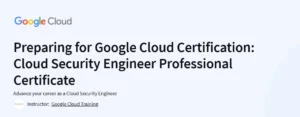What will you learn in An Introductory Guide to SQL Course
Create, query, update, and manage relational databases using core SQL commands
Perform multi-table operations with JOINs and UNIONs to combine data across tables
Write nested and correlated subqueries to solve complex data retrieval problems
Define and use views to simplify query logic and encapsulate common data patterns
Tackle common SQL interview questions with hands-on practice to build confidence
Program Overview
Module 1: Basics of SQL
⏳ 30 minutes
Topics: Creating databases and tables; INSERT, SELECT, UPDATE, DELETE operations
Hands-on: Execute basic DDL and DML commands in the browser-based editor
Module 2: Multi-Table Operations
⏳ 45 minutes
Topics: INNER, LEFT, RIGHT, and FULL JOINs; UNION and UNION ALL
Hands-on: Build queries combining data from two or more tables
Module 3: Nested Queries & Subqueries
⏳ 45 minutes
Topics: Simple subqueries, correlated subqueries, EXISTS and IN clauses
Hands-on: Write and optimize nested queries for real-world scenarios
Module 4: Views & Data Management
⏳ 30 minutes
Topics: Creating and using views; transactions, indexing, and basic performance tips
Hands-on: Create views and run transactional updates with ROLLBACK/COMMIT
Module 5: SQL Interview Practice
⏳ 30 minutes
Topics: Common interview patterns—TOP/N, window functions, grouping pitfalls
Hands-on: Solve 10 practice SQL interview questions with immediate feedback
Get certificate
Job Outlook
The average salary for a SQL Developer in the U.S. is $104,864 per year, with total compensation around $110,395
Demand for SQL skills spans roles such as Data Analyst, Database Administrator, and Backend Engineer
Employment of software developers (including SQL expertise) is projected to grow 21% through 2030, far above average
Proficiency in SQL unlocks opportunities in tech, finance, healthcare, and e-commerce sectors
Specification: An Introductory Guide to SQL
|





